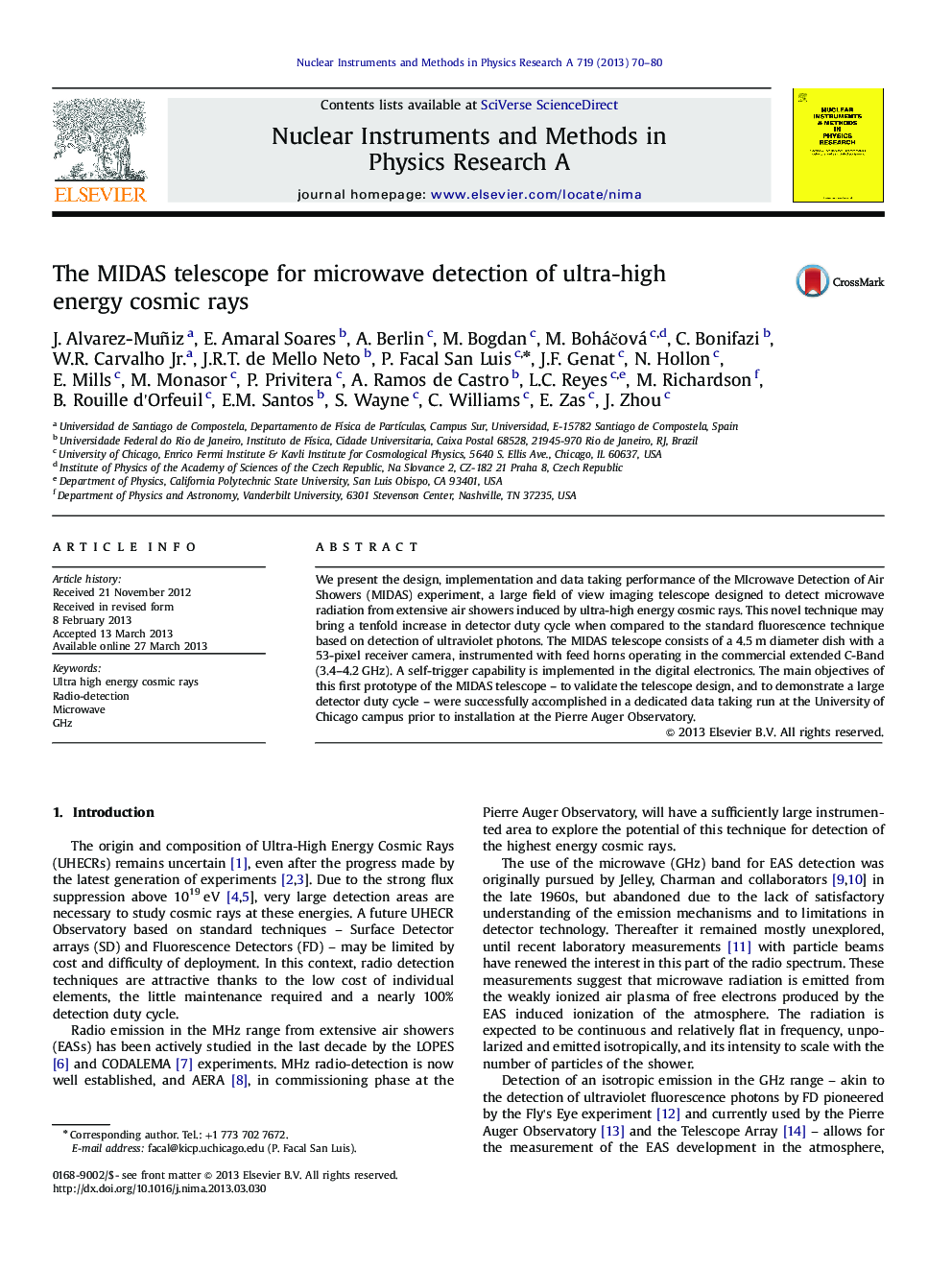| Article ID | Journal | Published Year | Pages | File Type |
|---|---|---|---|---|
| 1823022 | Nuclear Instruments and Methods in Physics Research Section A: Accelerators, Spectrometers, Detectors and Associated Equipment | 2013 | 11 Pages |
•The MIDAS objective is to detect ultra high energy cosmic rays using microwaves.•GHz radiation could provide a powerful alternative to current detection methods.•The MIDAS prototype explores the potential of the microwave technique.
We present the design, implementation and data taking performance of the MIcrowave Detection of Air Showers (MIDAS) experiment, a large field of view imaging telescope designed to detect microwave radiation from extensive air showers induced by ultra-high energy cosmic rays. This novel technique may bring a tenfold increase in detector duty cycle when compared to the standard fluorescence technique based on detection of ultraviolet photons. The MIDAS telescope consists of a 4.5 m diameter dish with a 53-pixel receiver camera, instrumented with feed horns operating in the commercial extended C-Band (3.4–4.2 GHz). A self-trigger capability is implemented in the digital electronics. The main objectives of this first prototype of the MIDAS telescope – to validate the telescope design, and to demonstrate a large detector duty cycle – were successfully accomplished in a dedicated data taking run at the University of Chicago campus prior to installation at the Pierre Auger Observatory.
